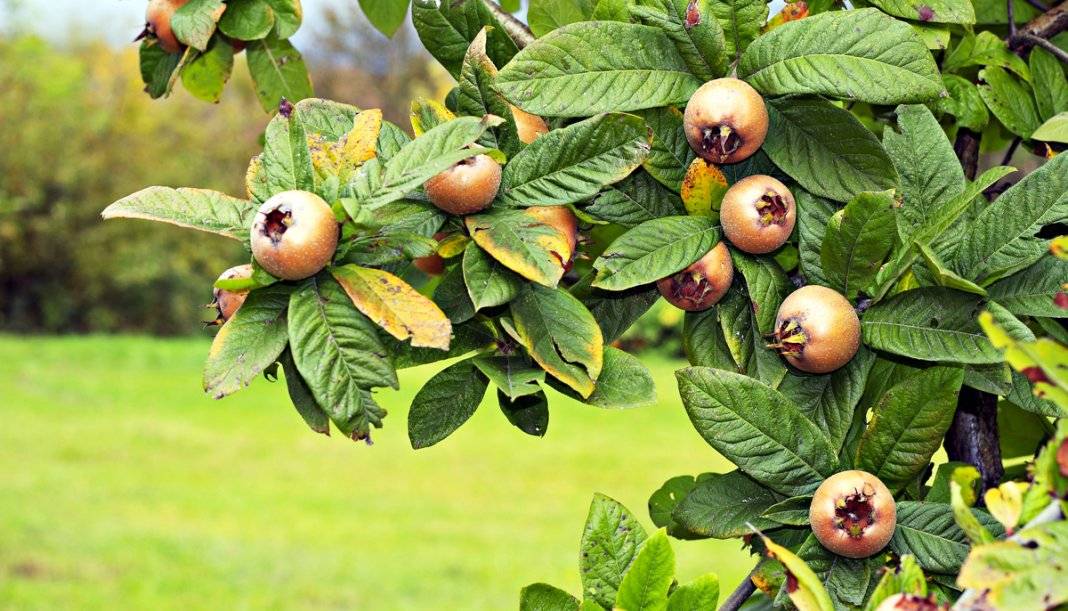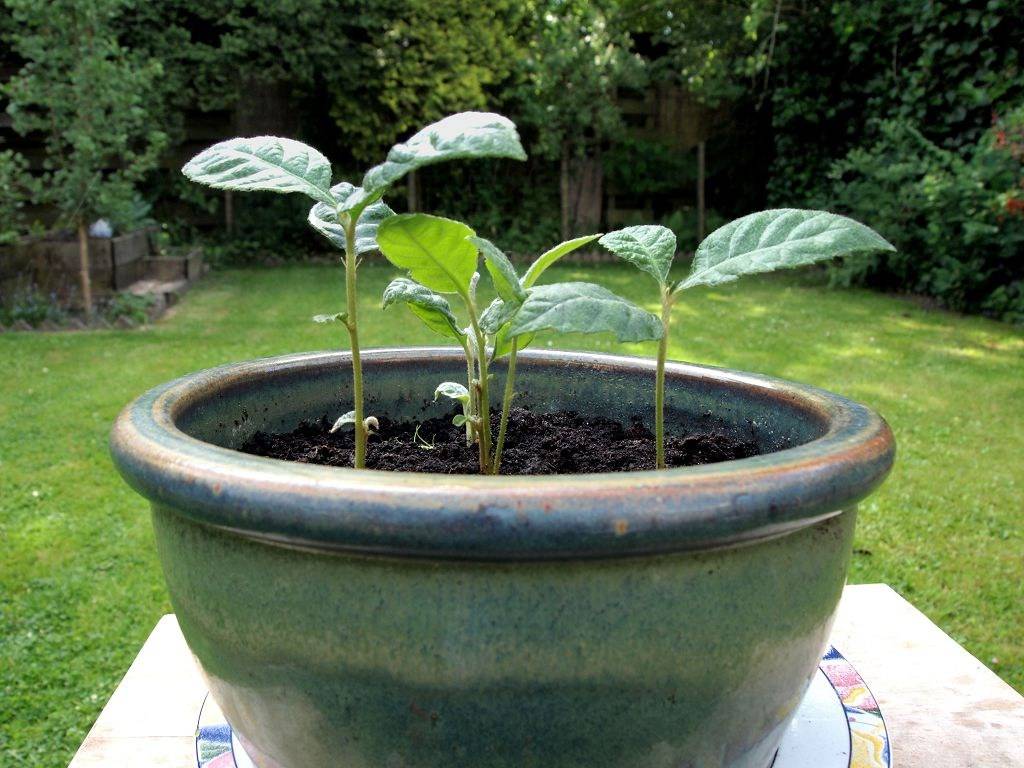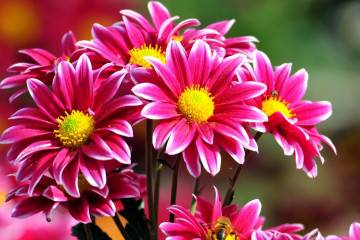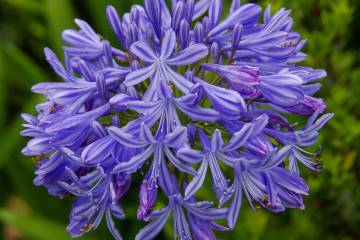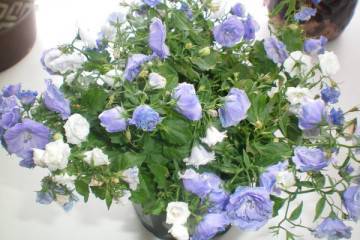Medlar Caucasian - growing in the garden in the open field
Content:
The Caucasian medlar is a fruit tree belonging to the Apple subfamily of the Rosaceae family. In the wild, it lives on the territory of Israel, Spain, Turkey, the Caucasus, Georgia, and the Crimea. It is grown in large quantities in Abkhazia. When the fruit ripens, the foliage has already fallen off and the trees are covered only with golden fruits.
General information about the plant
It can reach a height of 8 meters. Leathery leaves reach a length of 10 cm, width - 6. The upper surface of the leaf is smooth, the lower one is velvety. White or cream-colored flowers are collected in a complex panicle inflorescence. Excellent honey plant. Fruits are yellow-orange or reddish, 3-8 cm in size. The pulp is tart and dense, after ripening it becomes softer.
Outwardly, the fruits are similar to apricot, sour-sweet in taste, similar to a mixture of apricot, plum and apple. In the center of each fruit are hard seeds, which occupy almost half of the fruit's volume.
Caucasian medlar
Despite the addiction to warmth, this tree can also be found in the gardens of the Middle Lane. Medlar in the middle lane in the open field ripens in late autumn. Growing a tree is a laborious and painstaking process, but the taste and benefits of the fruit are worth the effort.
Japanese medlar
The Japanese medlar, or lokva, is more thermophilic than the Caucasian medlar. It tolerates only short frosts, therefore it is grown in the Middle lane in home or greenhouse conditions.
When cultivated at home, the Japanese variety does not need to be pruned. It is enough just to cut off the dried branches. Lokva does not branch out profusely, its crown is not dense. The plant easily tolerates pruning and shaping. If you wish, you can form it in the form of a bush and in the form of a standard plant.
Why is it worth growing in your garden
The large amount of ascorbic acid in the fruit makes this fruit indispensable in the treatment of colds. The use of aromatic fruits has a positive effect on overall health and immunity. B vitamins are good for the nervous system, vitamin A is good for the beauty of the skin and eyes. Folic acid is needed by pregnant and lactating women. The fruits also contain a lot of potassium and calcium, which are beneficial for the heart muscle and bones.
Golden fruits are poorly transported and, when the Abkhazian medlar ripens, it is almost impossible to bring it to the Middle Lane. Therefore, growing a Caucasian medlar in your garden is the right decision.
Planting and caring for the medlar plant in the open field in the conditions of Central Russia will be discussed below.
The use of medlar in traditional medicine
Nispero is a medicinal plant. The medicinal properties of its fruits, cones, leaves have been known since ancient times.
Caucasian medlar, when ripe, is rich in tannins and pectin, so its fruits have a hemostatic, bactericidal effect, and also effectively improve bowel function.
Medlar is a natural pharmacy, but, like any product, it has contraindications:
- gastritis;
- peptic ulcer;
- individual intolerance.
Growing medlar in the middle lane in the open field
So, it was decided to plant nispero on my site. First you need to decide on the landing site and study the basic principles of care.
The most important property is that the plant is light-requiring, so the sunniest place in the garden will be optimal for growing. There should be a distance of at least 1.5 meters to the nearest plantings, since the diameter of the crown of an adult tree can reach 3 meters. To get large yields, you need to plant two or three trees side by side.
Care
The first 4 years after planting, the medlar actively forms a crown; during this period, the earth near the trunk should not be allowed to dry out. Also, during flowering, the soil moisture level should be constant. We need regular watering and mulching of the trunk circle.
The first feeding with organic fertilizers is carried out 12 months after planting. Then they feed 2-3 for the entire growing season.
Sanitary pruning is done in the spring. During it, dried shoots are removed, branches growing perpendicular to the trunk, curved, growing close to other branches.
Planting seedlings
To grow seedlings, they take seeds from fresh ripe fruits and germinate them in greenhouses. Plants are planted on the site with a height of at least 30 cm.
The procedure for planting seedlings:
- Prepare a 50 cm deep planting hole in 4 weeks.
- Loosen the removed soil, free it from weeds and return it back to the pit.
- Before planting, make holes about a third larger than the pot in which the seedling grew.
- Remove the roots of the seedling from the container and place it in the hole with a lump of earth.
- Fill the hole with nutrient soil.
- Squeeze, water, install a support.
When medlar bears fruit
In favorable conditions, for the 4-5 season, the German (Caucasian) medlar begins to bloom and bear fruit.
Lokva grown at home in a pot will delight flower growers and bear fruit already 3-4 years after planting. At home, she will ripen in early autumn.
When to start picking yellow fruit and how to store it
Harvesting at the site begins in late autumn, when the viscosity and excessive acidity leave the fruits. Fruits can be stored on the tree throughout the winter, until early spring.
You need to store the crop in the refrigerator, excluding the contact of fruits. At room temperature, its shelf life does not exceed three days.
Diseases, pests and growing difficulties
To combat insects, insecticides are used, and fungicides are used against fungal infections. During prolonged rains, to prevent root rot, the soil around the trunk is treated with phytosprin.
Brown spots on the leaves
One of the diseases of the homemade medlar is brown spots on the leaves. The spots are first light, then brown, necrotic, are a sign of a fungal disease.
When such symptoms appear, they are treated with copper-containing fungicides. Such rot is especially active with a waterlogged, poorly drained substrate.
If the leaves dry
In the autumn-winter period, the leaves of the house tree often dry and fall off. The reason for such a leaf fall is the air dried out by the batteries. You can help the plant with regular spraying and humidification of the air in the house.
The heat-loving medlar will adorn any home and garden. Golden fragrant fruits will help in the period of colds, and jams and preserves served for tea will surprise and delight guests. Today this tree is also grown in Central Russia, getting quite good harvests towards the end of autumn.
